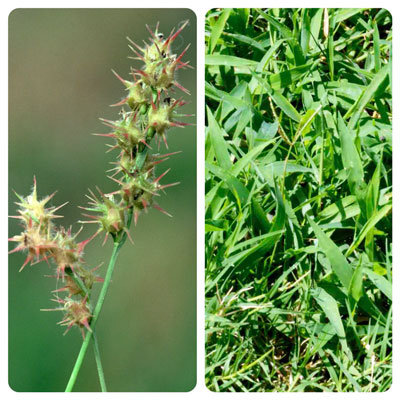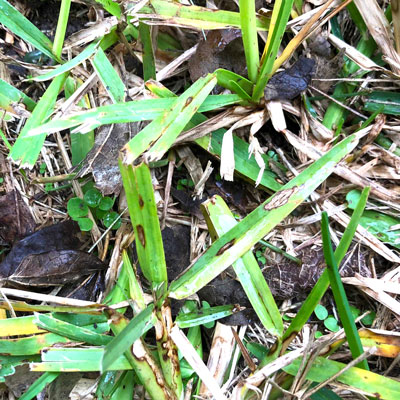Two Timely Tips in Lawn Care
How well your lawn fares through the summer depends on how you handle a couple of chores in the next several days. Let’s revisit these quickly.
1. Last call for pre-emergents for crabgrass and grassburs…
If you’re interested in preventing germination of these two annual grassy weeds, you need to be using pre-emergent weedkiller granules.

Here are the fast facts:
• Apply Dimension, Halts or Balan granules by the middle of June.
• Do so only if you also made the first application in the first two weeks of March. These materials are effective for about 100 days, so your two treatments need to be roughly 90 days apart.
• Do not apply if you intend to sow bermuda seed in the same area (or if you planted bermuda seed in that area recently).
• You do not have to apply the same pre-emergent that you used for the first treatment back in March. It’s ok to mix or match.
• Water moderately after you apply the granules.
Note: Call ahead to see if your favorite retailer has pre-emergent granules in stock. More and more do carry them now, but you’ll want to be sure they have them, especially if you’re seeking curbside delivery. I have been told that my advertisers North Texas Ace Hardware stores and Calloways Nurseries do have them. Some feed stores do as well. Elsewhere in the state, I need to let you do the calling.
While you’re buying your pre-emergent granules this time around, stock up for the next treatment. It will come the last week of August, and it will be to prevent germination of annual bluegrass (Poa annua), rescuegrass and the other cool-season weeds. It is much more difficult to find pre-emergents at that time. Store them dry and they will be just fine.

2. Fertilize St. Augustine now, before it gets any hotter…
Gray leaf spot is a fungal disease that has become increasingly common in the past 30 years. It is exacerbated by applications of nitrogen during the summer.
• Afflicted grass looks yellowed in irregular patches washed across the lawn.
• On close inspection you will see BB-sized, grayish-brown lesions on the midribs of the blades and also on the runners. They are what gives the disease its name.
• Turf authorities recommend not applying nitrogen to lawns that are prone to the disease during the summer, so many years ago I adopted the rule on my own lawn of not applying nitrogen after mid-June or before September 1. We tend to over-feed St. Augustine anyway, so it’s fairly easy to cut back for those 9 or 10 weeks.
• It’s also recommended that you water less frequently and more deeply, and that you water only in early morning hours (not in the evenings).
• The fungicide azoxystrobin sold as Scotts Disease-EX is labeled for use on gray leaf spot, but it will only offer temporary control of a current outbreak. Until we quit feeding in hot weather we’re not going to have a real solution.
Want to see what southern universities have to say about gray leaf spot on St. Augustine? There is actually quite a lot. Choose your favorite school! (LSU and Clemson have a lot of good help.)
North Carolina State University
